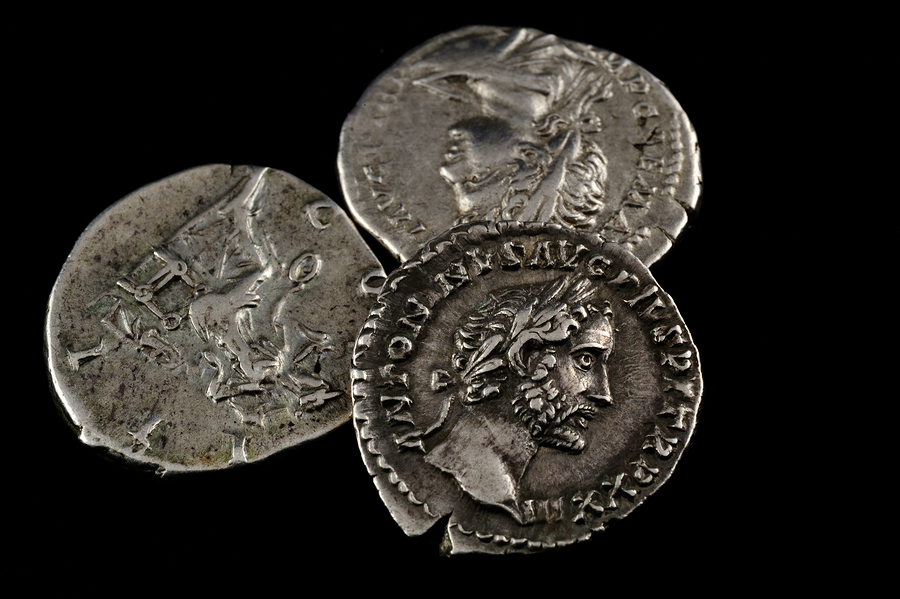Between Jesus’ Palm Sunday entrance into Jerusalem and His late-night arrest, He publicly taught in the Temple courtyard. During this time, various leaders came to test Him. These tests were not designed to determine if Jesus was the Messiah but were meant to trip Him up and give cause to arrest Him. They didn’t know that Jesus was also testing them to reveal their hearts.
The first test question offered to Jesus was simple and straightforward. “On one of the days while He was teaching the people in the temple and preaching the gospel, the chief priests and the scribes with the elders confronted Him, and they spoke, saying to Him, “Tell us by what authority You are doing these things, or who is the one who gave You this authority?” (Luke 20:1–2, NASB95) Jesus replied, “Ok, but you tell me something first – was the baptism preached by John heaven-sent or man-made?” Jesus put the leaders in the same box they were trying to put Him into. The religious leaders saw the box and refused to answer.
Having seen the failure of the direct approach, they watched and waited for Jesus to say something worthy of arrest. They even planted spies who pretended to be followers. One asked, “Teacher, we know that You speak and teach correctly, and You are not partial to any, but teach the way of God in truth. “Is it lawful for us to pay taxes to Caesar, or not?” (Luke 20:21–22, NASB95) Perhaps we should ask this question again around April 15th (Tax Day in the USA). But Jesus saw through their deceit and said, “Show Me a denarius. Whose likeness and inscription does it have?” They said, “Caesar’s.” And He said to them, “Then render to Caesar the things that are Caesar’s, and to God the things that are God’s.” (Luke 20:23–25, NASB95) Jesus turned a question designed to trip Him up by offending the Romans or the Jewish people into the most succinct Gospel presentation ever spoken. At this point, the Bible records that the Jewish leaders became silent.
The third test came from the Jewish sect called the Sadducees. Their purpose was to make Him choose sides in their long-standing argument with the Pharisees. The Sadducees didn’t believe in the spiritual aspects of the Jewish religion, such as the resurrection at the end of the age. They presented Jesus with a very long, drawn-out hypothetical question about seven brothers and a childless widow. Jesus provides an answer but also challenges their core beliefs by pointing out, “ But that the dead are raised, even Moses showed, in the passage about the burning bush, where he calls the Lord the God of Abraham, and the God of Isaac, and the God of Jacob. “Now He is not the God of the dead but of the living; for all live to Him.” (Luke 20:37–38, NASB95)
The final test was not a question but an approval. The scribes, the lawyers of their day, having listened to Jesus’ defense, said, “Teacher, You have spoken well.” For they did not have courage to question Him any longer about anything.” (Luke 20:39–40, NASB95) But Jesus challenged them anyway with a question designed to shake their world. “Then He said to them, “How is it that they say the Christ is David’s son? “For David himself says in the book of Psalms, ‘The Lord said to my Lord, “Sit at My right hand, Until I make Your enemies a footstool for Your feet.” ’ “Therefore David calls Him ‘Lord,’ and how is He his son?” (Luke 20:41–44, NASB95) The point of Jesus’ question and response was to skewer their pride and show them that while they knew the words, they didn’t understand their truth.
While the Jewish leaders, the Sadducees, and the scribes were testing Jesus, he was also testing them. Not only in the answers He provided but also in their actions. Luke next records, “And He looked up and saw the rich putting their gifts into the treasury. And He saw a poor widow putting in two small copper coins. And He said, “Truly I say to you, this poor widow put in more than all of them; for they all out of their surplus put into the offering; but she out of her poverty put in all that she had to live on.” (Luke 21:1–4, NASB95) The leaders, Sadducees, and scribes were all concerned with the right teaching and believing. While Jesus did not negate the need for right teaching and believing, He emphasized right doing. The poverty-stricken widow might not have been able to elegantly present the law or decisively argue a point of belief, but she lived her faith more than all of them.
The question before us today is this – Are we more concerned with proving ourselves right or doing right according to what Jesus has done for us? Are we protecting our territory or committed to following Jesus wherever He may lead?
- Mark – Listen Carefully - June 2, 2025
- Mark: Consider the Sower - May 28, 2025
- Mark – Family Matters - May 26, 2025




